By Dhawal Kataria, AICP, RSP1, Associate Editor, January 21, 2025
Bay Area native Veronica Flores is deeply passionate about affordable housing and community development. For the past decade, she has been with the San Francisco Planning Department, starting as a Current Planner focused on development applications and transitioning to her current role as a Senior Legislative Planner, where she has spent six years shaping land use policies. Veronica holds a Master of Urban Planning from San Jose State University and a Bachelor of Arts in Sociology with a Minor in City and Regional Planning from the University of California, Berkeley. She also dedicated over ten years to the APA CA Northern Board, serving in various capacities, including Student Liaison and Administrative Director.
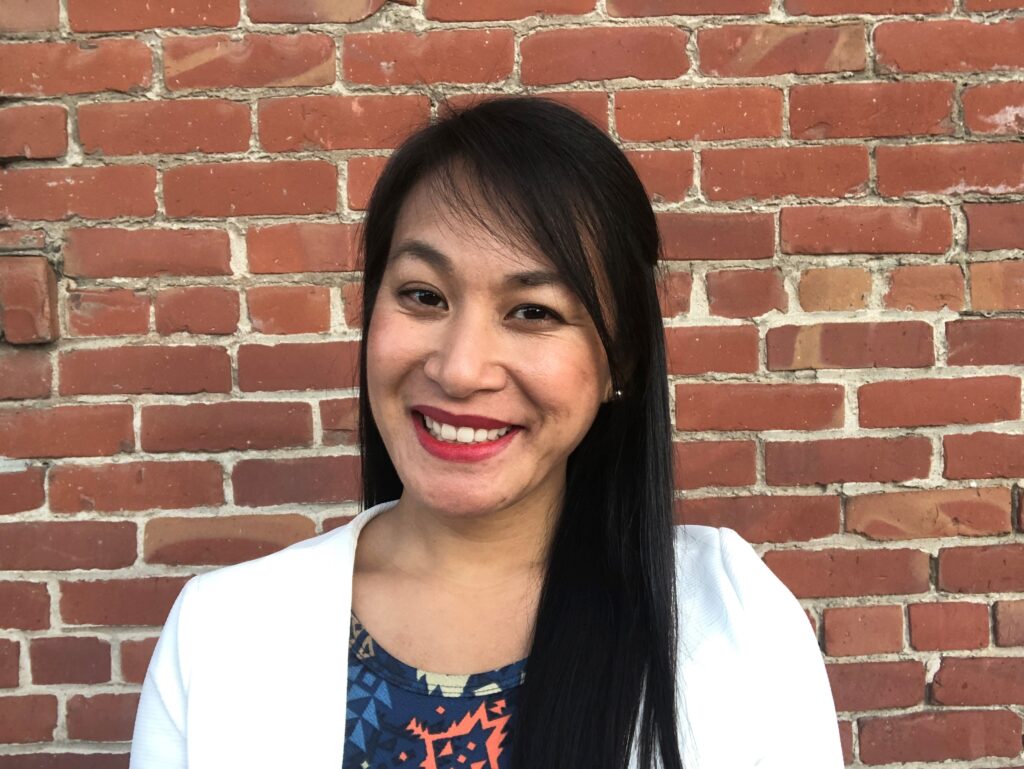
Tell us about your journey in planning and housing.
I first discovered my passion for urban planning during my undergraduate studies at UC Berkeley. While pursuing my degree, I took a city and regional planning course, which immediately piqued my interest. Unfortunately, by the time I realized how much I enjoyed it, it was too late to change my major. Instead, I decided to minor in the subject, thinking that if I remained intrigued, I could explore it further through graduate studies. One aspect of urban planning that particularly captivated me was housing.
Reflecting on my personal experiences, I recalled something my parents had shared: they had participated in the first legalization amnesty program in the country, Project HomeSafe, in Daly City. This program allowed our family to develop a second unit with just a few minor construction adjustments, such as thickening the wall between the garage and the unit to create a livable space for another household. I found this concept fascinating. Growing up in the Bay Area, I saw many friends leave due to the lack of affordable housing. Even as a child, I wondered why there wasn’t enough housing to meet the needs of our community.
This curiosity stayed with me throughout college and after graduation. I began exploring ways to contribute to affordable housing initiatives and increase overall housing opportunities. While interning at San Francisco Housing Development Corporation, I gained hands-on experience and a deeper understanding of the challenges and possibilities within this field. Over time, I’ve been fortunate to work on housing from multiple angles, including permit processing, and now, at a broader policy level.
Although I’ve explored other areas of interest, my commitment to affordable and accessible housing remains central to my work. It’s incredibly fulfilling to contribute to solutions that help shape better housing opportunities for our communities.
What is it like to work for the City of San Francisco, especially given its global reputation and complex systems?
Working for San Francisco has always been my dream, especially as a Bay Area native. I started my journey with San Francisco Public Works, first with their Complete Streets team and later in the Regulatory Affairs section. These roles provided me with invaluable training, which helped me secure my first position in planning. I’ve been fortunate to have supportive managers across various teams, which has made my experience even more rewarding.
What stands out most about working in San Francisco is the innovative spirit. At conferences, I often hear about ideas and initiatives we’ve already tried or implemented. This forward-thinking environment encourages us to push boundaries, experiment, and share lessons learned—whether it’s about what worked or what we’re improving upon. San Francisco’s ability to lead and learn in urban planning is something I deeply appreciate.
As a planner, I’ve only worked for the City and County of San Francisco, and it’s hard to imagine being elsewhere. Initially, I thought I’d start in smaller jurisdictions and work my way up, but the opportunities here have allowed me to grow unexpectedly. The City’s size and complexity mean planners often specialize within divisions, but I’ve tried exploring different roles. This has given me a well-rounded perspective akin to what I might have gained in a smaller jurisdiction while benefiting from the resources and challenges of a major city.
How do political changes affect your work?
As a legislative planner, my work is now closely tied to the priorities of the Board of Supervisors and the Mayor’s Office. While my primary role is to analyze ordinances and projects in relation to the general plan, there’s always a broader context of shifting policies and directives to consider.
Navigating political changes involves balancing diverse perspectives and adapting to new administrations. It’s a dynamic environment where past work may need to be reevaluated or adjusted to align with new directions. I’ve never been drawn to politics, so it surprised me when I took on this role. That said, I’ve found a balance that works for me—focusing on clear, objective analysis while leaving the political strategizing to higher-level staff. This approach allows me to contribute meaningfully while staying true to what I enjoy most about the job.
What is a legislative planner, and what does your role entail?
A legislative planner’s role is primarily to analyze new or proposed legislation that impacts the planning code. My team’s responsibility is determining whether the legislation aligns with the general plan and ways to improve it further. These recommendations might make the legislation more effective and better aligned with the City’s planning and land use principles.
The work involves conducting in-depth analysis, reviewing data, consulting with colleagues, and collaborating with experts from sister agencies. Building relationships with elected officials and their staff is also essential to this role. We strive to present suggestions in a way that ensures the legislation’s goals are met while addressing potential implementation challenges or areas for refinement.
At its core, the job is about taking an idea, understanding its objectives, and shaping the proposed legislation to align with the general plan and sound planning principles. The day-to-day work varies greatly. There’s no typical day, as each piece of legislation brings unique challenges and opportunities. My primary focus is making a solid case for the department’s position, backed by thorough analysis.
Tell us about your favorite project.
One project that comes to mind was unique because it combined site-specific and legislative planning efforts. It involved a family-owned development in the Excelsior & Outer Mission neighborhood. The developers initially proposed building over 100 units, with a bold plan to make half below-market-rate (BMR) units and the other half rent-controlled. At the time, no existing program or policy framework could accommodate such a proposal.
When I first inherited the project, my colleagues and I were stumped: a developer voluntarily offered to do more for affordable housing, but there was no existing avenue in the planning code to make it feasible. This challenge was pivotal in my career, coinciding with my transition to the legislative affairs section. I collaborated with the developer, a member of the Board of Supervisors, the City Attorney’s Office, and other stakeholders to draft new legislation that could bring the project to life.
Ultimately, the project became a success story. Although we couldn’t include rent control in the final plan, we secured an incredible range of below-market-rate units—50% of the development. Touring the completed site recently was incredibly fulfilling. It was a rare example where single-site zoning, which I don’t typically advocate for, proved to be a win-win for both the City and the developers. Without the tailored legislation to bridge the gap, the project might have defaulted to the standard 19% BMR requirement, missing out on its transformative potential.
This project exemplified my passion for affordable housing and demonstrated how creative problem-solving and collaboration can lead to meaningful outcomes. In addition to housing projects, I’ve found fulfillment in initiatives aimed at revitalizing small businesses, particularly after COVID-19. Working on legislation to help small businesses stay open or reopen has been another rewarding aspect of my career.
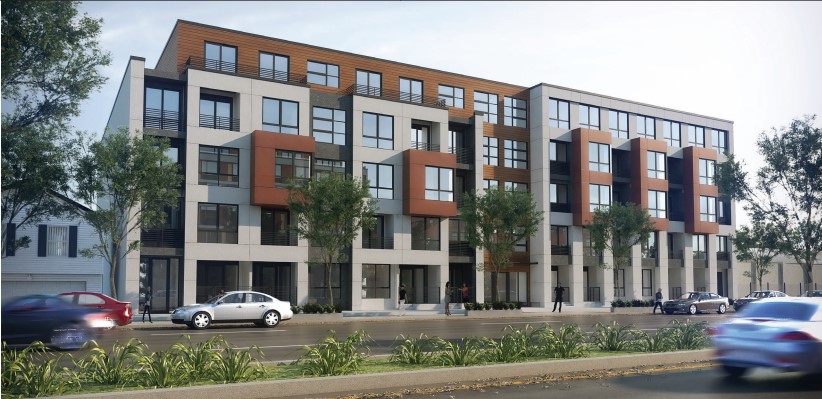
Tell us about your involvement with APA, and what was it like to serve on the APA Board for 10 years?
I joined the Urban Planning Coalition at San Jose State University (SJSU) during graduate school, where I applied to be the APA CA Northern student representative. This role gave me my first real introduction to APA.
In that position, I met many esteemed planners throughout the Bay Area, participated in a mentorship program, and was paired with Vivian Khan, FAICP. Her leadership was incredibly inspiring.
Being involved with Northern allowed me to meet other planners, make connections, and attend local events. It made networking easier and expanded my learning. After grad school, I continued attending social and professional Northern events like happy hours and panel discussions.
When there was an opening for the Young Planners Group (now called the Young and Emerging Professionals Group), I applied immediately. This role allowed me to make more connections and use the APA platform to reach out and extend those connections to other young and newer planners. I enjoyed exploring topics like becoming a planning director and helping volunteers step into more prominent roles within Northern.
The connections and network I built through SJSU and the APA were invaluable. Attending conferences with a cohort was also very helpful. Northern gave me so much, and I wanted to give back.
Later, I applied for and was elected as the Administrative Director, a role that fit my organizational skills and work style. Being on the Executive Board allowed me to support Northern and create a stronger foundation for providing programs. Overall, my time with the Northern has been incredibly rewarding, and when I looked back, I was surprised to realize it had been 10 years.

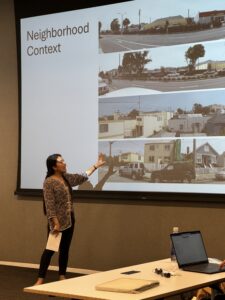
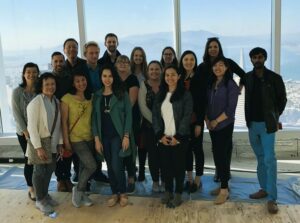
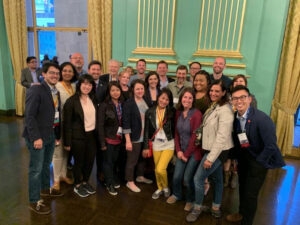
Tell us about your trip to Santiago, Chile.
One of my biggest regrets in college was not studying abroad—I didn’t realize there were scholarships or loan options, so I thought it would be too expensive. That made it even more important for me to venture out later and immerse myself in a different environment.
In 2022, the San Francisco Planning Department approved a sabbatical for me, and I took about four months off to travel to South America. I used this time to practice my Spanish and even volunteered in Buenos Aires. Through connections from Hing Wong, FAICP, and Alex Hinds, I was introduced to two local professionals in Santiago, Chile. Initially, I hoped to meet for lunch and chat casually, but they gave me an incredible walking tour of their city.
I was so inspired by the experience that I wrote an article (Markets, machas, and municipalities: a planner’s walking tour of Santiago) about it for Northern News. It was an enriching opportunity not just to admire the city’s architecture but to understand its planning history and the challenges faced by different neighborhoods. The tour wasn’t just about sightseeing but connecting with the community and learning from local professionals. It was truly one of the highlights of my sabbatical and gave me a perspective I wouldn’t have gotten otherwise. It was a spontaneous experience, too—what started as a casual lunch turned into an insider’s tour, including recommendations on where to eat and what to order, far away from the typical tourist spots.
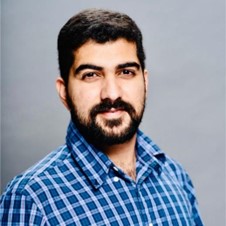
Interviewer Dhawal Kataria, AICP, RSP1, is a transportation planner at Kittelson & Associates. He is a Northern News Associate Editor and guest writer, and a member of Northern’s Board. All interviews are edited.
